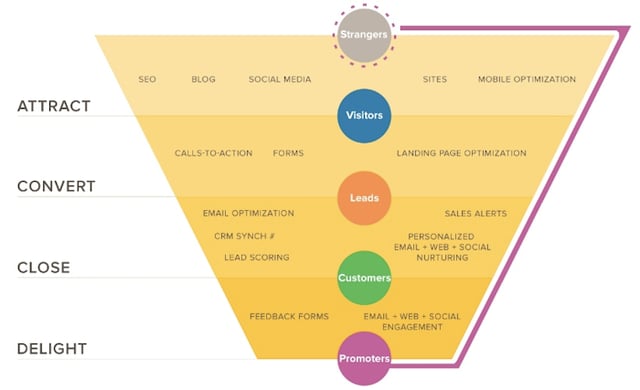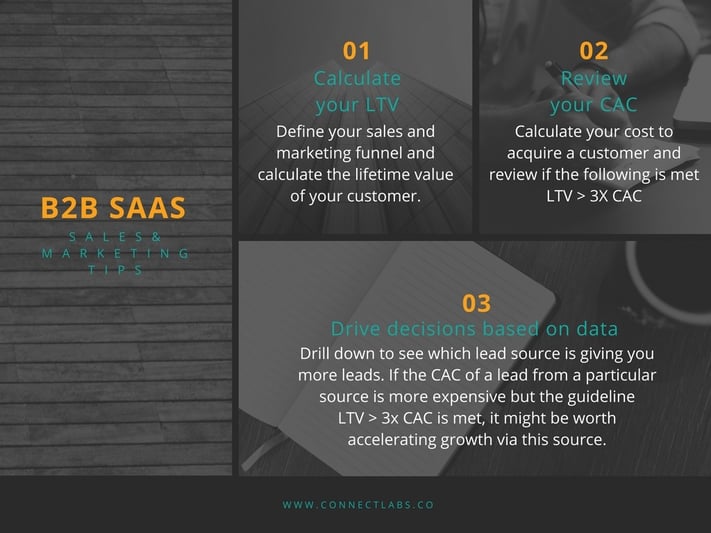We've all been there with the questions on operational efficiencies, trying to align people and process, to get the most conclusive outcome – increasing ROI.
SaaS CEOs and entrepreneurs are often faced with challenges as they start and grow their businesses. Even if you use a revenue model deemed one of the best, it still throws up risks. For instance, product and business decisions can impact cash flow, having a negative impact on growth.
So how can B2B SaaS businesses measure success and stay profitable?
In SaaS, unlike other services, it's imperative to find creative solutions to acquire, retain and grow customers. Usually, we notice a large emphasis placed on the product itself – and why not? A great product is half the battle won.
But having a great product is not enough. You need technology, marketing and processes in place to help boost sales. These three things will impact what the sales-end of your business funnel will look like. In turn, understanding your business funnel will ground your sales goals, making them realistic.

So how can you measure success and improve your sales and marketing processes?
How to measure success in a SaaS business

Calculate your LTV to CAC ratio
Keeping an eye on the cost of customer acquisition (CAC) is a great way to stay in tune with your success. To understand if your business model is doing well, it's imperative to answer this question:
Can I make more profit from my customers than it costs me to acquire them?
This is effectively a study of the unit economics of each customer. You'll need two metrics to answer this question:
- The lifetime value (LV) of a typical customer
- The cost to acquire (CAC) a typical customer
(For Entrepreneurs has great instructions for calculating LTV and CAC)
The best SaaS businesses have a LTV to CAC ratio greater than 3 – sometimes as high as 7 or 8. And many of the best SaaS businesses are able to recover their CAC in 5-7 months.
If your LTV > 3x CAC you're doing well – scaling up can be viable. Otherwise, it's a good indicator that the business needs to review costs and slow the process until you hit this target. Based on your LTV to CAC ratio, you can make business decisions on how to accelerate.
There's no harm in being optimistic about your product, but when it comes to selling you need to identify the ROI and keep a close eye on it. This will help boost your profitability and set realistic expectations about your product roadmap and map it to sales.
Evaluate your lead sources
By evaluating lead sources, you can see if there's a particular avenue that will get more leads at a lower cost. This doesn't mean you don't look at the types of leads you're getting, only that there's more value reviewing metrics that directly impact your bottom line.
At first glance, some expensive lead generation methods might not make financial sense. But if you look closely, the quality of the leads might justify spending on that source.
Examine your distinct segments
Segmentation also provides great insight into how your offer is peforming. Your segments could be based on:
- Pricing model
- Type of customer
- Industry vertical
Examining these segments will help you understand which will be more profitable for the business to pursue.
You will achieve greater sales and marketing success if you make financial decisions that are driven by data and that support your growth and profitability. Make sure you have your basics right and create a strategy that will work for your business.

March 23, 2017

